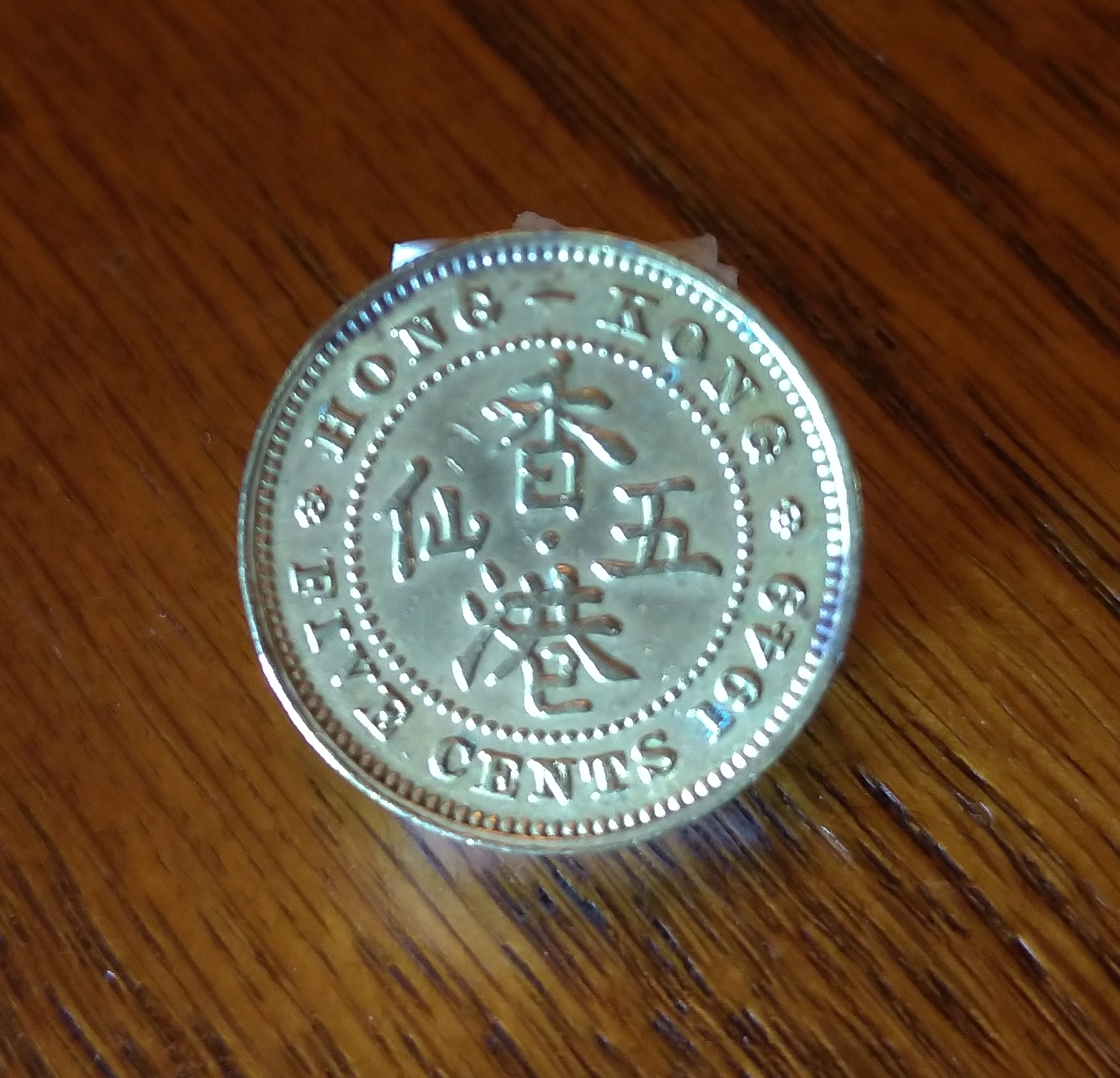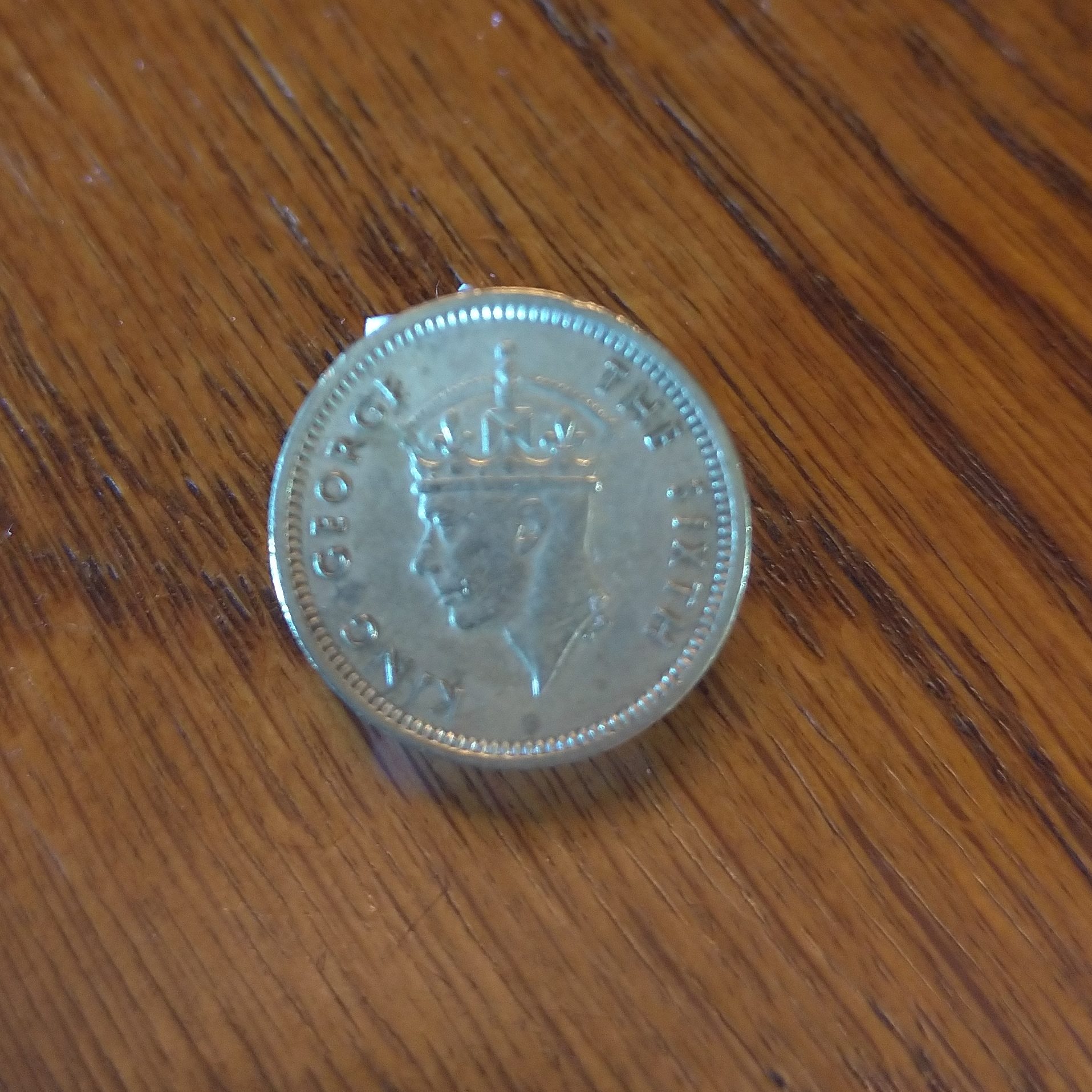Country or Region: Hong Kong
Year: 1949
Created from: 1949-1950
Value: 5 Cents
Weight: 2.5 grams
Diameter: 16.5 mm
Composition: Nickel-Brass
Estimated Modern Value: <$1.00 CAD

Obverse:
HONG KONG
香
仙 • 五
港
FIVE CENTS 1949
Translation:
Hong Kong
Five Cents

Reverse
KING GEORGE THE SIXTH
History of the Hong Kong Dollar (HK$)
Upon the establishment of a free trading port in Hong Kong in 1841, there was no local currency used in daily circulation. Instead, Hong Kong was saturated with foreign currencies, including Indian rupees, Spanish and Mexican Reales, Chinese cash coins, and British currency. In the year 1942, the British assumed control over the city and immediately the colonial government and intended to appoint the Pound Sterling as the offical Hong Kong currency.
However, t wasn’t until twelve years later, in 1863, that a special Hong Kong currency was issued. These coins, which bore the portrait of the reigning British Monarach, were produced by the Royal Mint in London. They included the silver 10 cent, bronze 1 cent, and 1 mil (1/10 of a cent). Although they were not accepted for government payments, foreign currency continued to circulate among the new local coins, leading to a complex currency system.
In 1866 the Hong Kong Mint was established, but promptly shut down only two years later. It wasn’t until 1935, after the rising price of silver prompted China officially abandoned the silver standard in 1934, the Hong Kong Government followed suit and finally declared the Hong Kong Dollar to be the offical local monetary unit – although it wasn’t properly unified until 1937.
After these changes were in place, 6 different coins were made available for general circulation. These include 5, 2, and 1 dollar coins along with 50, 20, and 10 cent coins.
The offical currency in Hong Kong was changed again from 1941-1945 during the Japanese occupation. This period saw the Japanese Military Yen (JMY) become the only legal currency for daily exchange. After WWII, however, when Hong Kong regained control the JMY became obsolete.
China and Britain eventually signed the Sino-British Joint Declaration, a document which oversaw the British Dependancy of Hong Kong return to Chinese rule in 1997.
5 Cent Coin – Dao Ling (斗令)
First issued in silver in 1866, the composition of the 5 cent coin didn’t change until after China and Hong Kong abandoned the silver standard in 1935, after which it was minted with a combination of copper and nickel. Only 2 years later, however, this coin was again replaced with a pure nickel coin in 1937 which remained in mint until 1941 when the Japanese occupation began.
Upon the reintroduction of the 5 cent coin in 1949, its composition was changed again to a mixture of nickel and brass. The coin remained as offical currency until 1989, when it was demonitized.
The coin belonging to this collection on of the the 15 million 5 cent coins minted during the year 1949.
References
https://hk.history.museum/en_US/web/mh/publications/spa_pspecial_02_01.html
https://www.advfn.com/currencies/hkd/about/HongKongDollar.html
https://en.m.wikipedia.org/wiki/Hong_Kong_five-cent_coin
https://gwulo.com/node/10164
http://www.hkartclub.com/coin/hkcoin/hkcoinhisteng.html